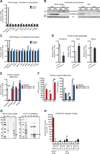A creatine-driven substrate cycle enhances energy expenditure and thermogenesis in beige fat
- PMID: 26496606
- PMCID: PMC4656041
- DOI: 10.1016/j.cell.2015.09.035
A creatine-driven substrate cycle enhances energy expenditure and thermogenesis in beige fat
Abstract
Thermogenic brown and beige adipose tissues dissipate chemical energy as heat, and their thermogenic activities can combat obesity and diabetes. Herein the functional adaptations to cold of brown and beige adipose depots are examined using quantitative mitochondrial proteomics. We identify arginine/creatine metabolism as a beige adipose signature and demonstrate that creatine enhances respiration in beige-fat mitochondria when ADP is limiting. In murine beige fat, cold exposure stimulates mitochondrial creatine kinase activity and induces coordinated expression of genes associated with creatine metabolism. Pharmacological reduction of creatine levels decreases whole-body energy expenditure after administration of a β3-agonist and reduces beige and brown adipose metabolic rate. Genes of creatine metabolism are compensatorily induced when UCP1-dependent thermogenesis is ablated, and creatine reduction in Ucp1-deficient mice reduces core body temperature. These findings link a futile cycle of creatine metabolism to adipose tissue energy expenditure and thermal homeostasis. PAPERCLIP.
Copyright © 2015 Elsevier Inc. All rights reserved.
Figures






Comment in
-
A futile approach to fighting obesity?Cell. 2015 Oct 22;163(3):539-40. doi: 10.1016/j.cell.2015.10.006. Epub 2015 Oct 22. Cell. 2015. PMID: 26496598
References
-
- Berlet HH, Bonsmann I, Birringer H. Occurrence of free creatine, phosphocreatine and creatine phosphokinase in adipose tissue. Biochimica et biophysica acta. 1976;437:166–174. - PubMed
-
- Bloom JD, Dutia MD, Johnson BD, Wissner A, Burns MG, Largis EE, Dolan JA, Claus TH. Disodium (R,R)-5-[2-[[2-(3-chlorophenyl)-2-hydroxyethyl]-amino] propyl]-1,3-benzodioxole-2,2-dicarboxylate (CL 316,243). A potent beta-adrenergic agonist virtually specific for beta 3 receptors. A promising antidiabetic and antiobesity agent. Journal of medicinal chemistry. 1992;35:3081–3084. - PubMed
-
- Cannon B, Nedergaard J. Brown adipose tissue: function and physiological significance. Physiological reviews. 2004;84:277–359. - PubMed
Publication types
MeSH terms
Substances
Grants and funding
LinkOut - more resources
Full Text Sources
Other Literature Sources

